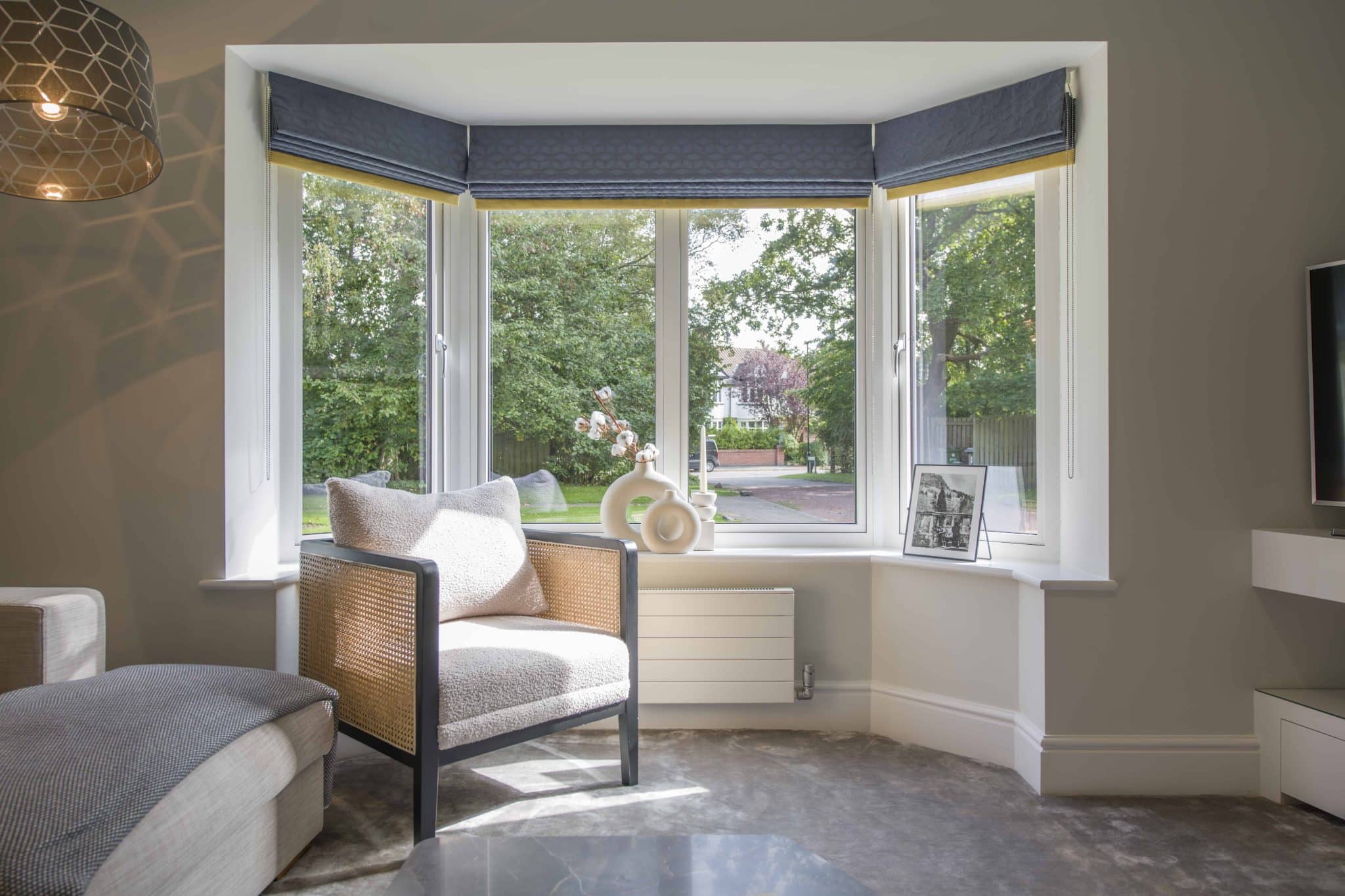Enhance your home’s ambiance by transforming windows into stylish focal points. Learn how strategic window design can boost natural light, create focal points, and make rooms feel more spacious.
Windows are more than just openings to the outside world—they’re key design elements that can transform your space. Whether you’re aiming for a cozy vibe or a sleek, modern look, the way you style your windows plays a huge role in setting the tone for your home. With the right approach, windows can enhance natural light, create focal attractive points.
Importance Of Window Design In Interior Aesthetics
Window design shapes the overall ambiance and style of a space. The size, shape, and placement of windows influence natural light, air circulation, and visual harmony, contributing to the room’s character.
Material selection impacts both functionality and appearance. For example, wood window frames complement traditional decor, while sleek aluminum options enhance modern interiors.
Choosing The Right Window Treatments
The right window treatments balance function and aesthetics, enhancing privacy, light control, and style. Evaluate their specific features to suit your space.
Curtains And Drapes
Curtains and drapes cater to diverse needs with their material and design options. Thicker fabrics, such as velvet or blackout panels, reduce light and improve insulation, making them ideal for bedrooms. Lighter materials, like cotton or linen, allow natural light in while maintaining a soft, airy look in living spaces. Pairing bold colors or patterns with neutral decor adds personality.
Blinds And Shades
Blinds and shades excel in precision light control and privacy. Horizontal or vertical blinds featuring wood, faux wood, or aluminum slats offer adjustable light settings, fitting modern or rustic themes. Roller shades, Roman shades, or cellular shades provide varied opacity levels for versatility in bedrooms, bathrooms, and home offices. Consider Luxy smart blinds for gable end or shaped windows, combining automation with unique design needs.
Shutters
Shutters combine timeless elegance with durability. Plantation shutters enhance traditional and contemporary interiors with adjustable slats for controlled light and airflow. Café-style shutters provide privacy to lower window sections, letting natural light filter through above. Their solid wood or composite materials offer thermal insulation and long-term functionality, making them a versatile choice for different rooms.
Maximizing Natural Light
Carefully planned windows transform spaces by amplifying natural light, creating a welcoming and energy-efficient environment. Strategic placement and material choices enhance brightness and atmosphere.
Placement And Positioning Tips
Optimize window placement for light efficiency by considering orientation. South-facing windows deliver consistent sunlight throughout the day, ideal for high-activity areas like living rooms or kitchens. North-facing windows diffuse soft, even light and work well in tranquil spaces like bedrooms or home offices. East-facing windows emphasize morning light, while west-facing windows capture the afternoon warmth.
Sheer And Light-Filtering Materials
Select materials that enhance light flow without compromising aesthetics. Sheer fabrics, such as voile or organza, diffuse sunlight for softer illumination, making them a popular choice for living areas or dining rooms. Light-filtering materials, like cellular or roller shades, maintain brightness while reducing glare and ensuring privacy.
Layer sheer curtains with heavier drapes for added flexibility, letting you shift between maximum natural light and room darkening when needed. Opt for neutral colors or pastel tones in sheer materials to reflect light and create a cohesive, airy ambiance.
Enhancing Privacy Without Compromising Style
Effective window solutions allow you to maintain privacy while complementing your interior design. Explore options that combine functionality with aesthetic appeal.
Frosted Glass Options
Frosted glass enhances privacy by obscuring visibility while still allowing natural light to filter through. It’s available in various designs, such as etched patterns and decorative films, catering to both classic and modern styles. Permanent frosted glass works well in bathrooms and entryways, while adhesive films offer a temporary and customizable option for living spaces or rental properties.
Layered Treatments
Layered treatments offer flexibility by combining multiple types of window coverings. Pair sheer curtains with blackout drapes to manage light levels throughout the day and ensure complete privacy at night. Combining Roman shades with roller blinds adds texture and depth to your decor.
Adding Decorative Elements To Windows
Incorporating decorative elements enhances the visual appeal and character of windows, creating a polished and cohesive look. Using details like valances, cornices, and accessories adds depth and personality to your window treatments.
Valances And Cornices
Install valances or cornices to give your windows a stylish, finished appearance. Valances, fabric-based treatments that cover the top portion of a window, work well with curtains or blinds. Opt for tailored valances for a structured look or flowing ones for a softer aesthetic. Cornices, rigid and often upholstered, are ideal for adding architectural interest. Use them to conceal curtain rods or hardware, ensuring a clean, streamlined design.
Window Accessories
Incorporate window accessories to elevate functionality and style. Tiebacks or holdbacks, available in materials like metal, wood, or fabric, secure drapery and frame the window attractively. Use decorative curtain rings, finials, or clip-on embellishments to customize your setup. For practicality and flair, add motorized systems for automated shades or blinds. Ensure that accessories complement your room’s color scheme and decor.
Common Mistakes To Avoid
Measuring Incorrectly
Accurate measurements are crucial for well-fitting window treatments. Poor measurements can result in treatments that impair energy efficiency, block light improperly, or appear disproportionate in your space. Record dimensions precisely for width and length, and where possible, consult a professional for custom measurements to ensure the best fit.
Ignoring Functionality
Window treatments that fail to meet a room’s functional needs can lead to dissatisfaction. Consider the purpose of each room before selecting treatments. For example, install blackout curtains in bedrooms for better sleep quality or opt for sheer shades in living rooms to allow natural light without compromising an open and inviting feel.
Conclusion
Your windows are more than just functional features; they’re key design elements that can transform your space. By thoughtfully choosing window styles, treatments, and placements, you can enhance natural light, create visual harmony, and achieve the perfect balance of privacy and aesthetics.
Whether you’re layering curtains, experimenting with materials, or incorporating decorative accents, the right approach can elevate your interior design.








